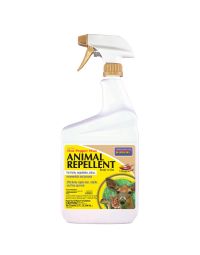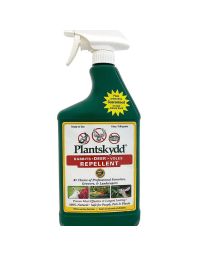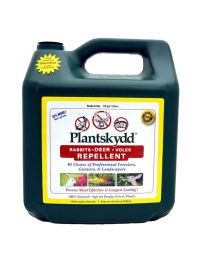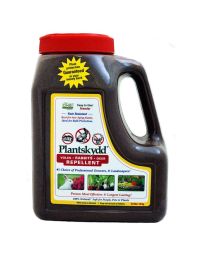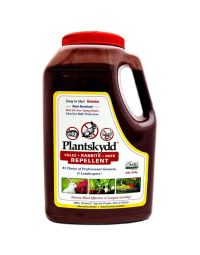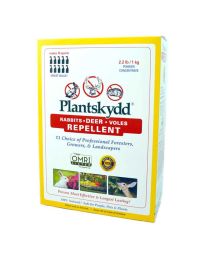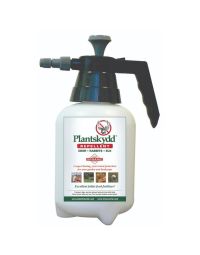Protecting Your Plants from Freezing, Breakage and Salt Damage
Many trees, shrubs and perennials need protection in order to survive the ever changing and always challenging Minnesota winters. Some plants not considered fully cold hardy can experience root damage, dieback or death simply from temperatures colder than they can tolerate. Newly planted or immature thin-barked, deciduous trees (particularly maples and fruit) can experience sunscald. Evergreens, including deciduous evergreens such as boxwood and rhododendrons, can become desiccated (dried out) from the winter wind and sun suffering winter burn. Trees and shrubs are also particularly susceptible to damage from heavy, wet snow and ice. Plants can experience damage or death from salt used for de-icing. Damage from animals eating most or all of a plant is another common winter problem. Don't become disheartened! Take these steps to minimize or prevent these issues.
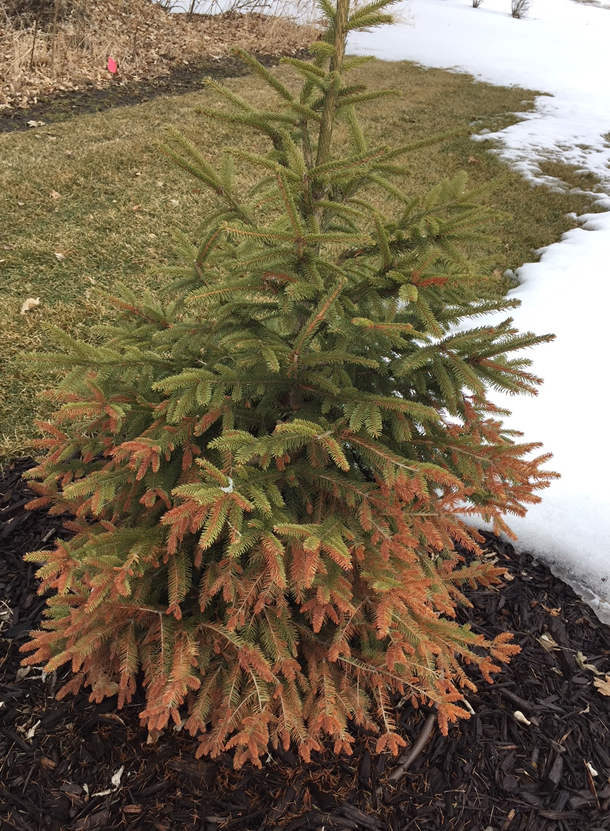
Winter burn on Norway Spruce
Tip 1: Tree wrap and protectors can help young trees survive
Use tree wrap and tree protectors on immature (3 years and younger), thin-barked deciduous tress to help protect them from sunscald and animal damage.
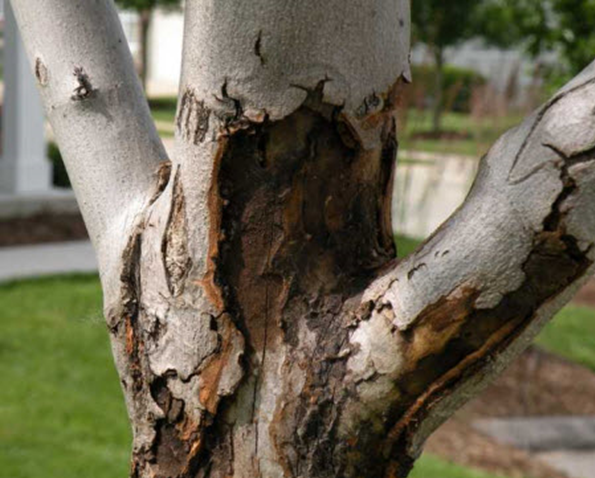
Tree damaged with Sunscald
Gertens offers a variety of options and sizes to fit your needs.
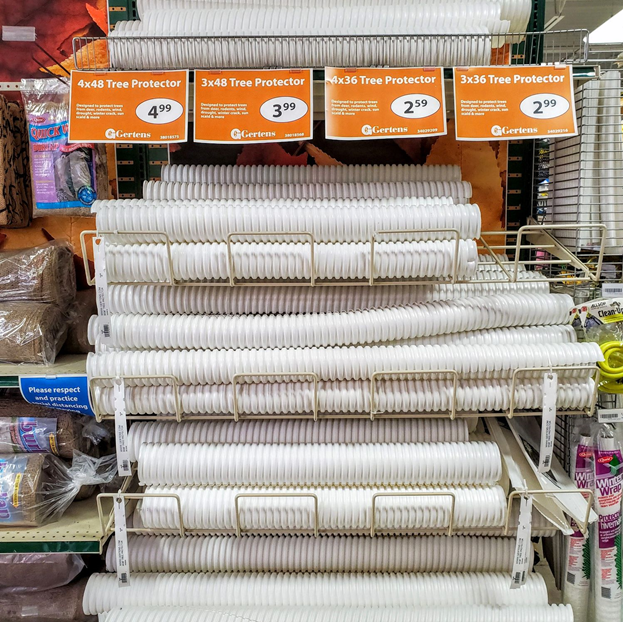
Spiral tree guards in multiple sizes
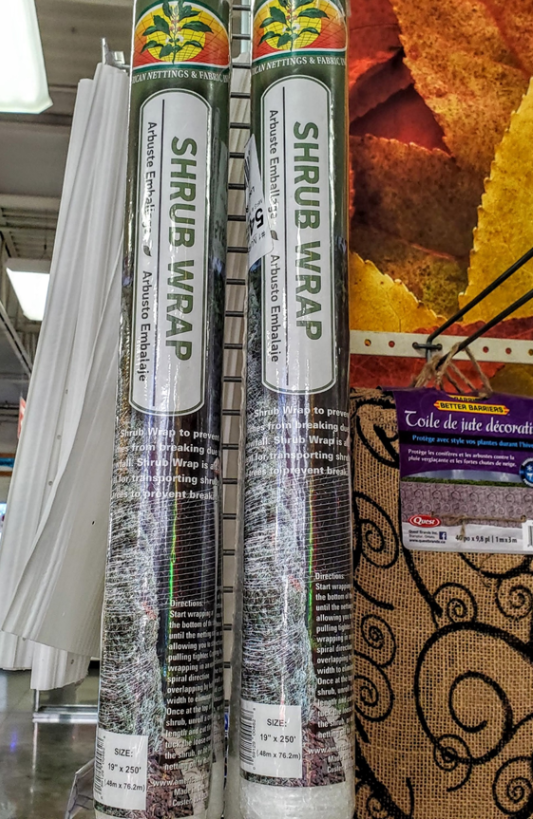
Use tree wrap on immature (3 years and younger), thin-barked deciduous trees to help protect them from sunscald and animal damage.
Tip 2: All plants benefit from mulch
All plants, whether mature or immature, benefit from mulch. This can be an extra few inches of shredded bark or pine needles, shredded leaves or straw. It is best to add this extra mulch after the ground is frozen. Typically, that’s early December for Zone 4 and late November for Zone 3. Generally, there is a 2-week difference. Check your local County Extension if you are unsure.
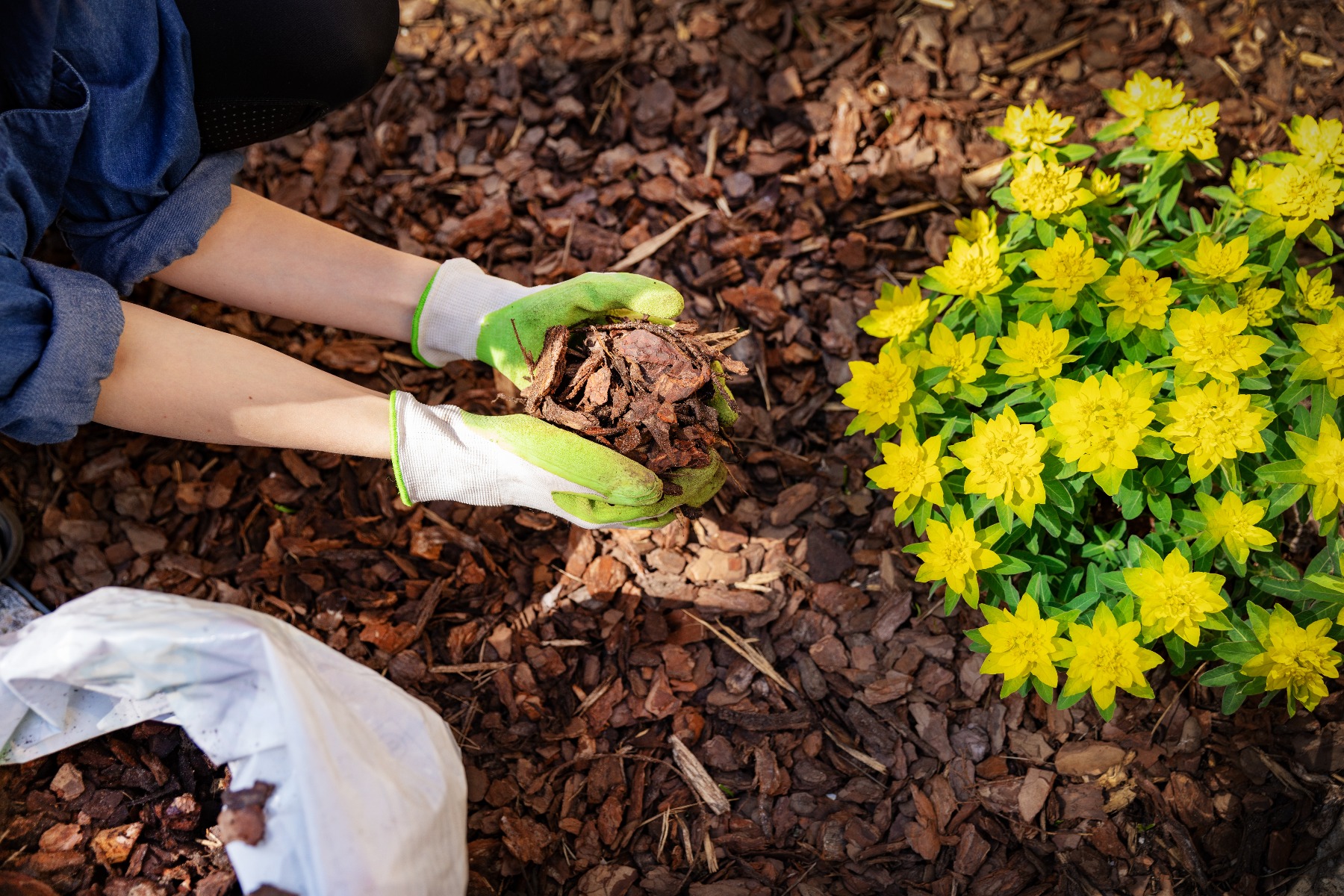
Tip 3: Create protective windbreaks with burlap
Burlap can be used to build windscreens or act as “mummy” wrap. This protection can greatly reduce or prevent needle browning and desiccation in evergreens caused by winter sun and wind. Wrap trees together and create a windbreak. Multi-stemmed deciduous trees, such as birch and serviceberry, and upright evergreens, such as junipers and arborvitae, are prone to breakage from heavy snow and ice. Loosely wrapping multiple trunks with horticultural tape, nylons or strong cloth strips two-thirds of the way up can prevent one or more of these trunks from bending or breaking. Loosely wrapping an entire evergreen in burlap (like a mummy) can prevent breakage and desiccation. Remember to remove the ties, wraps, tree protectors and burlap in the spring.
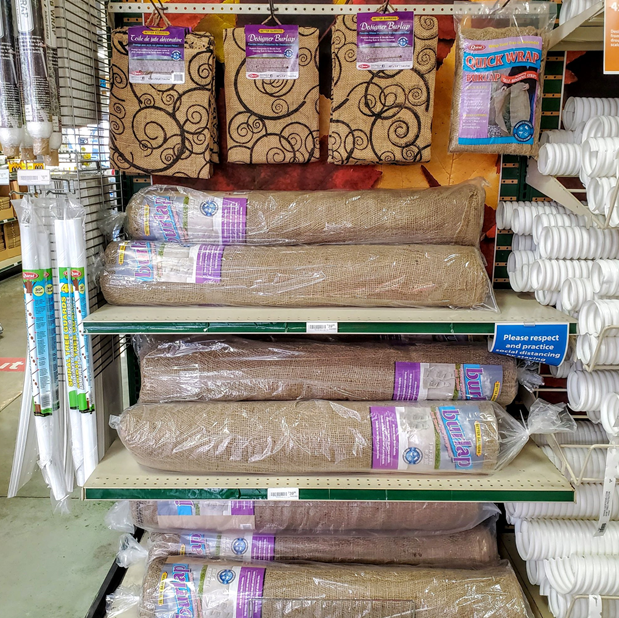
Gerten’s even carries Designer burlap!
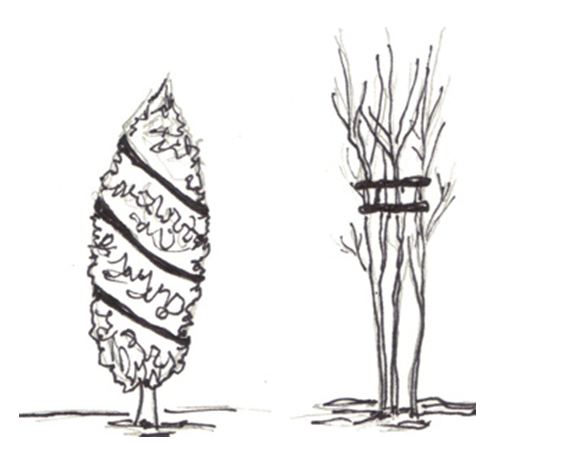
Wrap tree stems together to prevent breakage from heavy ice and snow
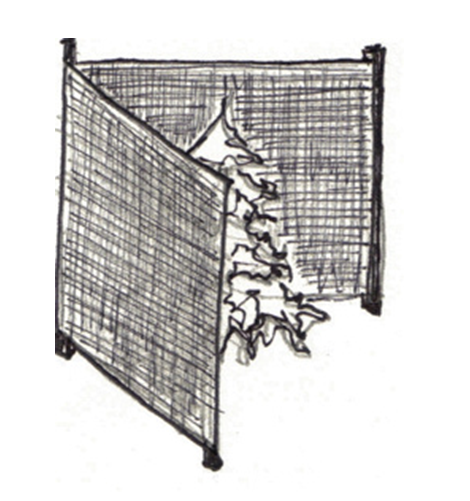
You can create a windbreak with burlap
Tip 4: Leave perennials standing through the winter
Leave your perennials standing through the winter to make your winter garden more interesting and help trap snow around the plant crowns. This snow acts as an insulating blanket, like the additional mulch, to protect your plants.
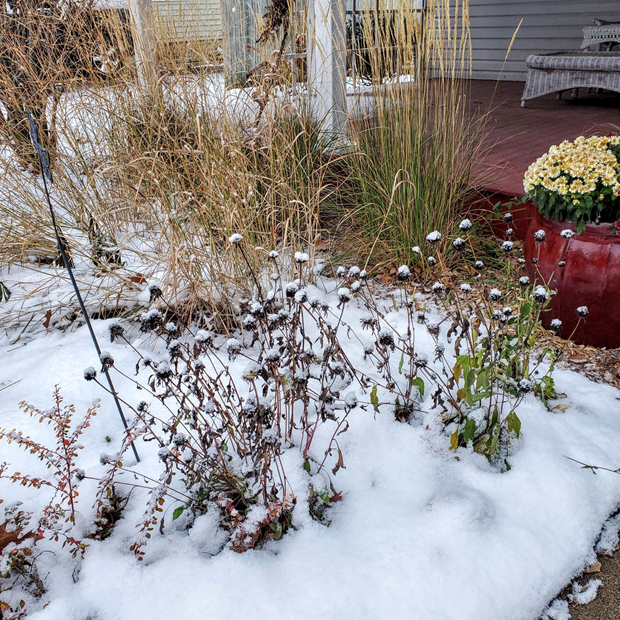
Bonus - leaving the coneflowers and grasses up for food and shelter for wildlife
Tip 5: Water till the ground is frozen!
It is important to continue to provide your plants with water throughout the fall. Moist soils hold more warmth, and it is particularly important for newly (3 years and younger) planted trees and shrubs. Watering deeply but less frequently will give your plants the best chance of survival. Saturating the root zones is the idea! If there has been a dry summer, it is important to water all your trees and shrubs. After a couple hard freezes, perennials will start to show signs of dormancy by wilting or changing color. Trees and shrubs should be watered until the ground freezes. Continued deep watering is important for root production and growth and necessary to ensure your trees and shrubs are ready for the winter. In dry years, it is even more critical.
In the Future
If this seems like a lot of additional work, you can minimize it in the future by choosing plants suited to your particular location. Unless you are a learned gardener, stick with plants that are hardy in our area, zone 4. (Northern Minnesota is zone 3.) Locate plants based on the light, soil and moisture conditions they prefer. This greatly reduces plant stress, which contributes to a plants inability to tolerate adverse winter conditions. If you live in an area where deer and rabbits are plentiful, try sticking to plants they find less appealing. Plants grown and sold at Gerten’s are chosen for their winter hardiness, but all young plants need a little extra protection until they get established. Any of our helpful and knowledgeable nursery staff will be glad to help you with your selections. More information on protecting trees and shrubs in winter is available HERE from the University of Minnesota Extension.
The experts at Gertens are always available to answer your questions!

